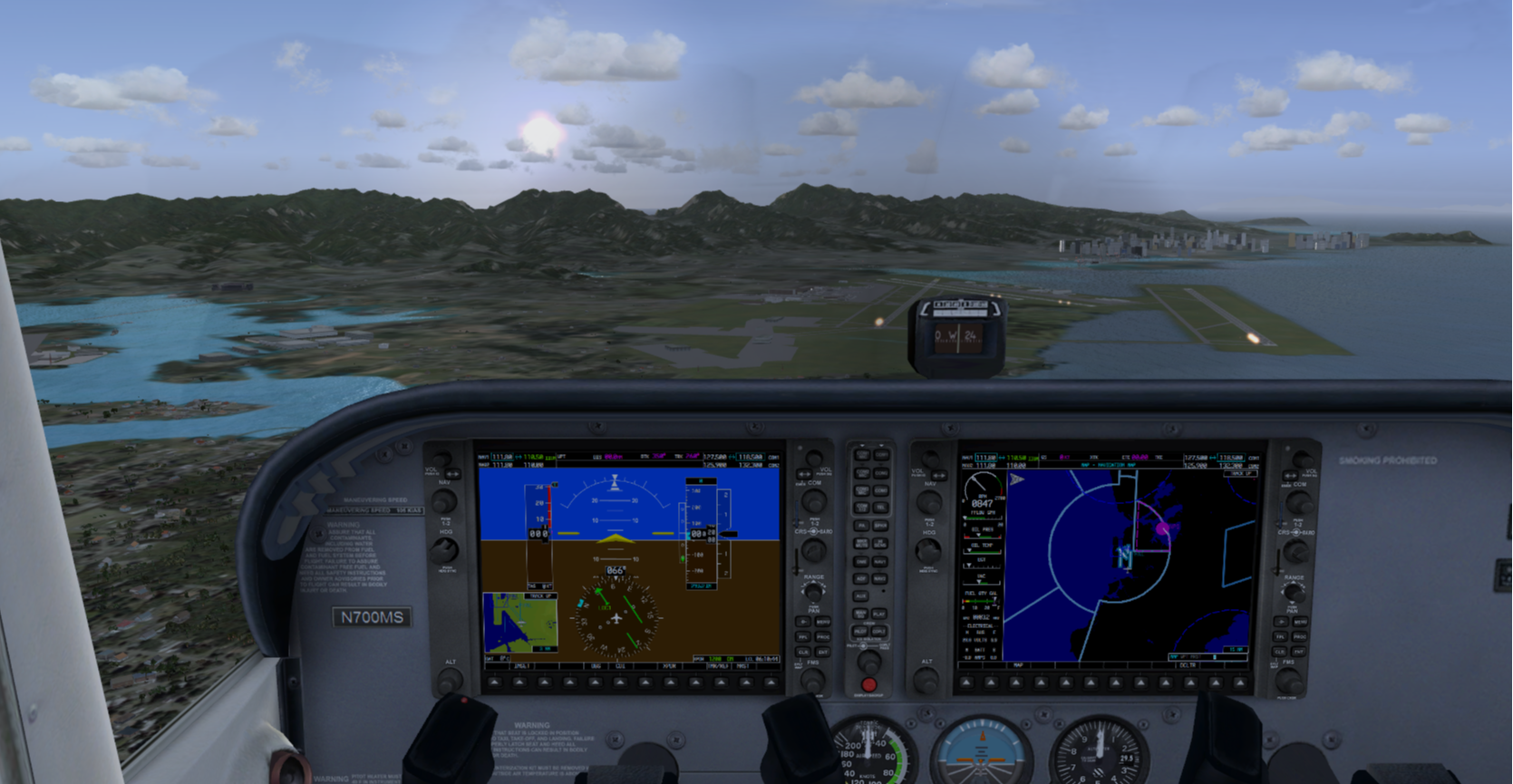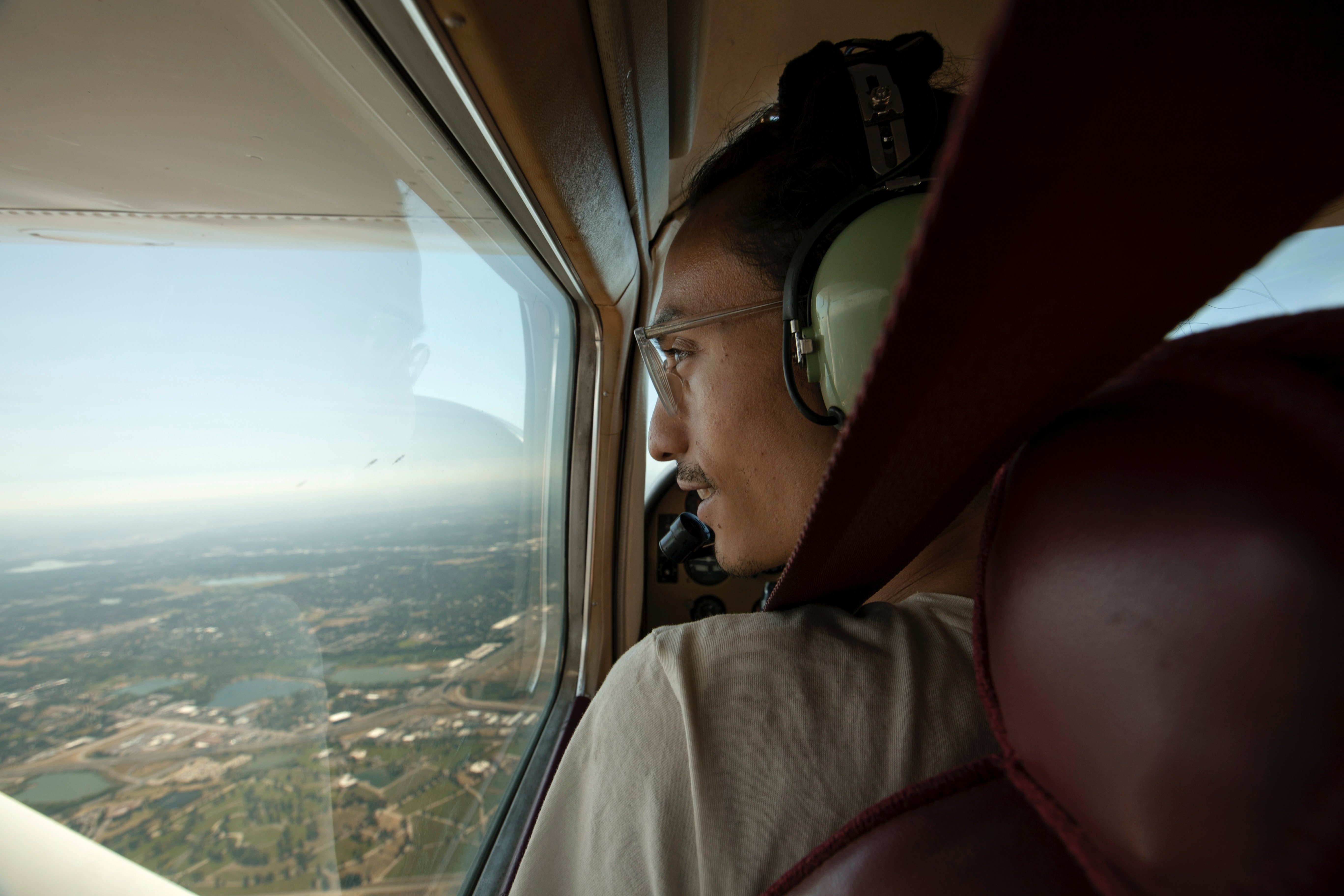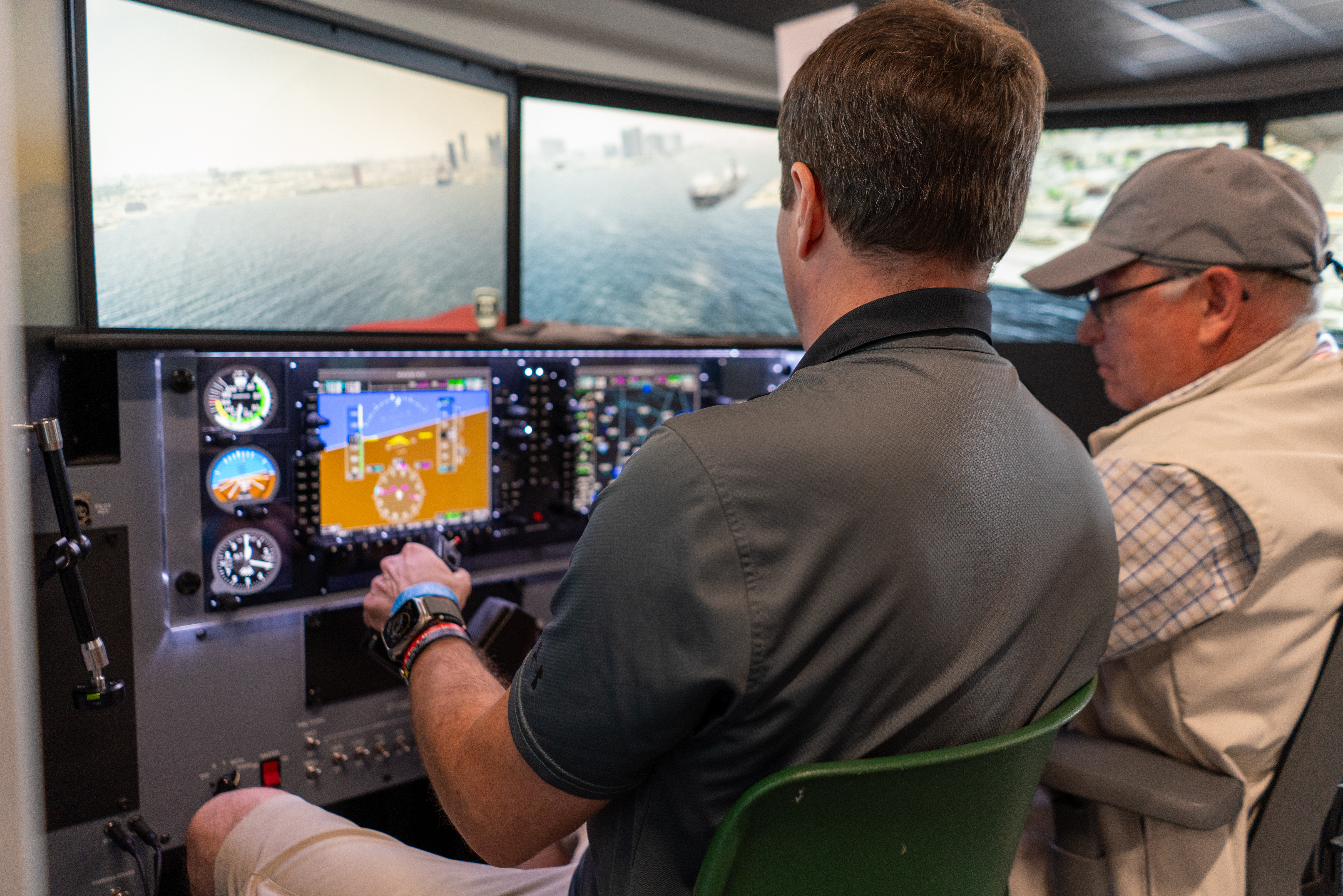An Introduction to Chair Flying
For any new skill, practice makes perfect. However, practice for flying can be quite difficult if you don’t have access to an airplane, a flight simulator, or any type of realistic cockpit once you leave your flight school. To help bridge the gap between sessions with your flight instructor, chair flying is an effective way to supplement your flight training at home.
What Is Chair Flying?
Chair flying involves taking a few quiet moments to visualize a specific aircraft procedure or task and perform each step in your mind, often by talking through it out loud and going through the appropriate motions with your hands and feet. Chair flying is simply a way for students to complement their flight training in the airplane and flight simulator with minimal hardware requirements. Practicing the repetitions of different maneuvers and flows without having to leave the comforts of your home is what makes chair flying so productive and valuable.
Why Should You Do It?
Since it allows you to practice flying in your living room without a meter running, chair flying can help you reduce the cost of learning to fly. A basic chair and a creative imagination are all that you need to reinforce the actions learned in your flight training.
Outside of flying an actual airplane or flight simulator, chair flying is one of the most productive ways to practice what a pilot does in the cockpit. Chair flying, flight simulator training, and aircraft training actually work well collectively to build your confidence and proficiency at the aircraft controls. Without any visual or auditory stimuli, your mind is unfettered when you chair fly, and you can talk your way through a task before practicing it with visual and motion cues in a flight simulator and performing it amongst all the distractions of a real airplane.
When you're learning landings, for example, each type of practice has an important role as you build your proficiency:
- Chair flying helps you visualize yourself at the controls of the aircraft and talk through how to plan and execute your approach to land.
- Flight simulation helps you hone your muscle memory and proficiency by shooting hundreds of approaches in a row without needing to taxi back out and fly to the practice area.
- The airplane helps evaluate what you've learned and practiced amidst the distractions of real-world flying.
Chair flying is a beneficial practice at every stage of flight training, whether you’re a private pilot student learning the different configurations of the airplane, an instrument student learning to program an approach, a multi-engine student learning your engine out memory items, or a flight instructor student learning how to fly from a different seat. The ability to flow from different configurations or phases of flight will make you more efficient and confident in the aircraft, and that starts with the visualization practice you gain from chair flying.
How Do You Do It Effectively?
As a student, you can get as simplistic or creative as you want with your chair flying practice. For a basic approach to chair flying, you can simply practice on your couch with your kneeboard and checklists as you visualize the cockpit and each step for the task you are performing. A step up from this would be to obtain a picture of your airplane’s cockpit so that you can have a simple visual item to correlate with your actions throughout the practice session. Perhaps the most ideal scenario involves getting to your flight school early or staying late in hopes of being able to sit in the cockpit or simulator of your airplane. All of these methods can work as you’re continually building the muscle memory that is so valuable throughout your flight training. Many student pilots like to alternate between the options at different stages of their learning.
However, regardless of the method you prefer, be sure that you practice as if your instructor or examiner is sitting in the airplane with you. Though the saying is practice makes perfect, we should tweak it to perfect practice makes perfect. The goal with chair flying is to start building the neural pathways to make flying a bit easier. If we are instilling the wrong memories or connecting the wrong pathways, this can be detrimental and lead to the formation of bad habits.
Here are a few tips to keep in mind as you begin to turn your living room into your personal training airplane.
- When you’re chair flying, try to make it as if you’re in the cockpit of your airplane. Find a quiet area to ensure that you won’t disturb anyone or be disturbed. If you fly with a kneeboard, strap that on and have the appropriate checklists readily available.
- Have your study guide nearby so that you can ensure you’re adhering to the correct steps in each maneuver or flow.
- Talk yourself through each session and say each step aloud. This is crucial. It allows you to catch mistakes that you might otherwise miss if you weren’t talking yourself through the maneuvers. For example, you may know your go-around procedure is max power followed by an incremental raising of the flaps as you climb away. If you talk yourself through the procedure and miss a step, you’ll likely notice that something sounds off, and you can reference your study material to ensure you’re not missing anything.
- Lastly, though it may seem or feel silly, put yourself through the physical motions. This is going to reinforce the muscle memory and motor skills associated with that particular action.
When Should You Do It?
You should aim to chair fly both before and after a training flight. Chair flying before a flight will help ensure that you’re prepared for your upcoming lesson. Being prepared for each lesson is critical so that you can continue moving forward in your flight training and avoid becoming stagnant.
You should also find a few minutes to chair fly after each of your flight lessons. With the new information that your flight instructor gives you, along with any critiques of previously learned material, you can continue to tweak and build your techniques before practicing them in a flight simulator.
Related Content: Using a Simulator for Private Pilot Training
You’ll be surprised how much turning your living room couch or office chair into your airplane for a few minutes a night will help immensely in your flight training. Chair flying can be a tool for pilots of all levels and at all stages of flight training. The visualization of maneuver steps, cockpit flows, and emergency procedures is incredibly valuable in helping you progress through each stage of training. Not to mention, it is completely free training that will help you tackle those difficult maneuvers, leaving your flight instructor happy and impressed with your performance.
Share this
You May Also Like
These Related Articles

5 Tips to Stay Proficient on a Home Flight Simulator

7 Steps to Save Money on Your Flight Training

